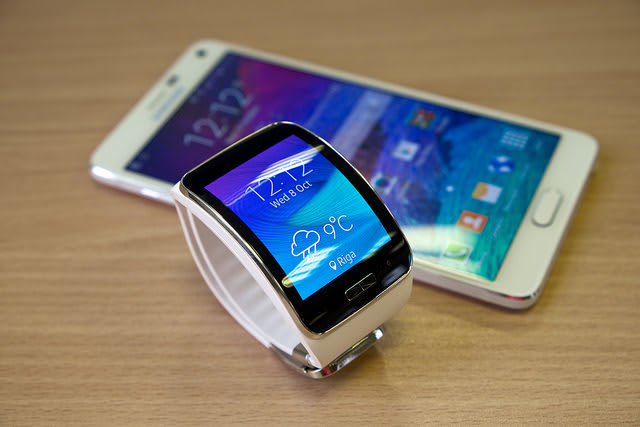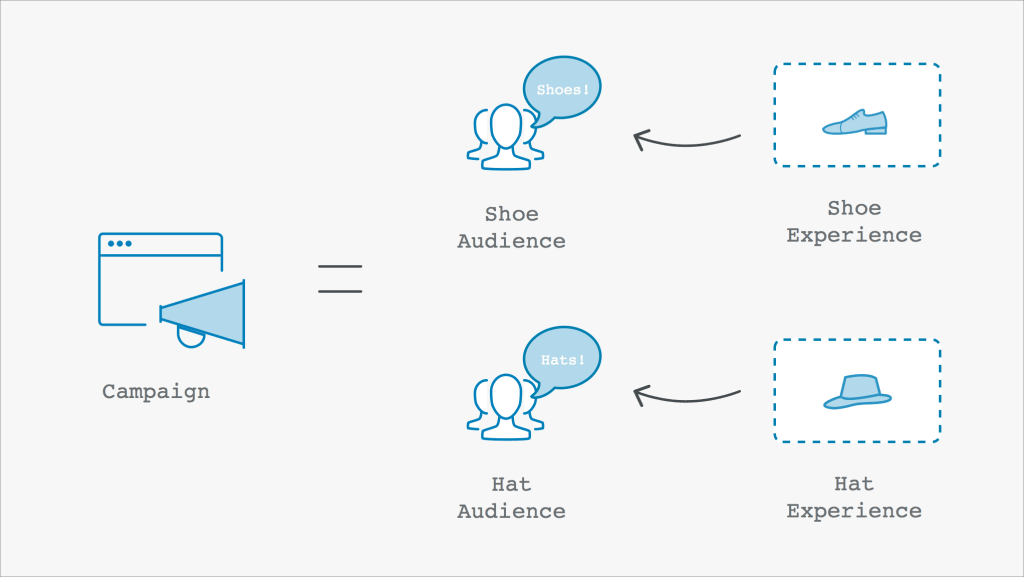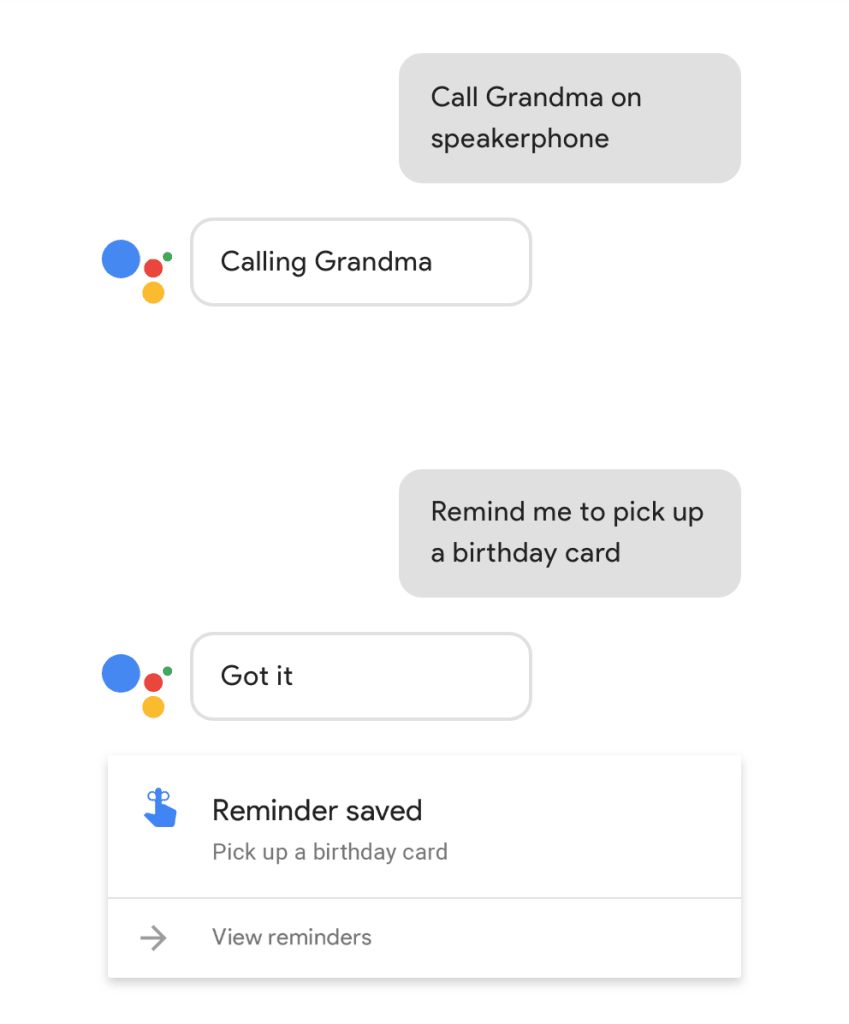With 2018 fast approaching, marketers are busy getting their strategies in place for the year ahead – and it’s a year that promises plenty of change.
We’ve got the rise of machine learning and artificial intelligence to think about, technologies like voice search coming of age and the challenge of creating more personalised web experience.
All of this is going to have a major impact on how we design websites for conversions. In this article, we’re going to look at ten web design trends for 2018 that will determine your online performance for years to come.
#1: Content-first design
The days of designing for specific devices are coming to an end. Roughly ten years ago, the mobile web matured as a technology and wreaked havoc on the entire web design industry. We simply weren’t prepared for a future where people would access the web on anything other than desktop computers.
Every business that had invested in an online presence had invested in a format that was about to become outdated and essentially unusable on the most important device in people’s lives. Sadly, even now, the average mobile experience leaves a lot to be desired and we’re miles away from designing content that works across smartwatches, phones, desktops and 4K TVs hooked up to the web.

Credit: “Samsung Gear S smartwatch with Galaxy Note 4” flickr photo by Janitors https://flickr.com/photos/janitors/15477789022 shared under a Creative Commons (BY) license
The problem is we’re still designing for devices and, in most cases, only two of them. But what about voice platforms and personal assistant apps that don’t even direct people to websites? What about devices connected by the Internet of Things and technologies we haven’t even created yet?
The reality is we need to forget about dated models like mobile-first design and concentrate on a content-first approach. This means formatting content in a way that users can access on your site, Google Home can reproduce in voice search and upscales from mobile displays all the way to the next wave of 8K screens that are hitting the market.
Device agnostic design isn’t a new concept but as the range of devices people use to access the web increases, 2018 is the year we need to start taking it seriously.
#2: Personalisation
Another design concept that’s about to kick off is personalisation. Again, the idea has been around for some time but the technology to implement genuine personalisation has only really caught up with the concept over the last year or two.
Effective personalisation isn’t about calling people out by name or getting creepy with personal details. It’s about pinpointing consumer interests, where people are along the buying process and delivering a tailored message to nudge them on another step.

Source: Optimizely
With tools like Optimizely, you can already create variations of your homepage for different audiences, based on criteria like their geographic location, the device they’re using and where they came from (search, social, etc.) and what kind of content they’ve previously engaged with.
As personalisation becomes more advanced, we’ll be tailoring experiences based on the keywords people in Google, the
#3: Micro interactions
Micro interactions are finally getting the attention they deserve in the wider design community. Speak to any UX designer and they’ll tell you this is long overdue but 2018 is shaping up as the year when micro interactions will make their presence on the mainstream web.
So what are micro interactions and why are they important? Well, as Sneha Munot puts it on UX Planet, they’re “the little animation or visual responses users see when they perform certain actions.”
In other words, micro interactions are visual responses that provide feedback from user actions, enhancing the experiencing of interacting with an interface. Some micro interactions might appear trivial but they confirm that a user action has had the desired effect – e.g.: confirming that a user successfully liked a social media post.
Moving back to consumer websites, micro interactions tell users when they’ve successfully submitted a payment, favourited a product or submitted a review.
They can also enhance the navigation of your site, the way users interact with content (e.g.: content they’ve read vs content they haven’t) and a wide range of actions that bring them closer to converting.
#4: Multistep forms
By far the biggest breakthrough we’ve made with form optimisation was converting to multi-step form designs – and we expect to see more brands make the jump in 2018. With multi-step form designs and analytics from Leadformly, we’ve been able to increase form conversions by up to 300% for our clients.
Multi-step forms the intimidation factor of lengthy forms and increase engagement with touch gestures and other micro interactions that reduce typing and create a more immersive experience. And with Leadformly’s form analytics you can pinpoint which fields and other elements on your forms are preventing conversions.
This is how brands should be designing and optimising their forms in 2018.
#5: Machine learning and AI
Machine learning is starting to transform the way people work in just about every industry. In terms of web design and conversion optimisation, we’re on the brink of machine learning tools that can make design choices on your behalf, based on how people interact with your site. Pretty soon, these tools will be able to crunch more data in a day than you could handle in a decade (assuming that much is available) and extract insights.
It’s not about taking the design process away from designers, but rather empowering them to make better decisions, backed up by larger volumes of data than ever possible before.
#6: Predictive analytics
Something else we can thank machine learning for is making predictive analytics possible for brands of any size. Soon, predictive analytics tools will be as common as landing page builders and email marketing platforms, turning your existing data into qualified predictions and better conversion rates.

IBM’s predictive analytics tools might not be pretty but they’re powerful
Imagine an advertising campaign that adjusts based on the weather, new search trends, important sports results or anything else that might affect your conversion rates. MAchine learning and predictive analytics make all of this possible by mapping out a data history, spotting patterns and identifying situations where adjustments should be made.
For example, a predictive analytics tool might notice that
#7: Constant design improvements
The tradition of redesigning websites every few years has been fading out for some time, thanks to conversion rate optimisation. And with machine learning promising to automate much of the testing, data and predictive analytics side of things for us, website redesigns will be replaced with a constant state of design improvements.
Unless you’re completely rebranding, drastic redesigns are an inefficient approach to optimisation. You render most of your previous data useless and have to start from scratch. Not to mention the fact you instantly go back to making design choices based on intuition rather than user data – aka: shooting in the dark.
By automating the conversion process, you’ll be able to make systematic design changes as they’re needed, knowing that they’re backed up by data collected from your users, not some design best practises guide. You know that all of your design tweaks are made with the goal of improving business results rather than aesthetic reasons alone. And you don’t have to spend thousands on expensive redesigns anymore when you can make small, incremental improvements that have a proven impact on ROI.
#8: Integrating with conversational UIs
One of the biggest disruptions in web design over the next few years will be integrating with conversational UIs. This means creating content that integrates with platforms like Amazon Echo, Google Assistant, voice search, chatbots and voice technology on all devices – from TVs to the cars we drive and the ovens on our homes.

Google Assistant
Google and Amazon already have their conversational platforms on the market. Facebook, Apple and Microsoft are among the other tech giants working on their own platforms designed to cater for everything people need to do online. If you’re not integrated with these platforms, you won’t be discoverable on the platforms people use for most of their online activities.
#9: Looking beyond Google Search
With a wider range of conversational UIs acting as search platforms for users, we can’t keep optimising for Google alone. Aside from having more platforms to optimise for, the nature of search is changing.
Google itself is turning into more of a recommendation engine than a search engine as users become more passive in the way they discover content. Social media has had a lot to do with this, where users simply scroll down feeds without actively searching for anything.
As user habits change and these platforms continue to evolve, the user intents we target, the kind of content we create and the process of nurturing leads along the consumer journey will drastically change. Competition breeds innovation and we can expect things to develop at an even faster pace as Google’s rivals get stronger.
#10: Designing the offline experience
With mobile came the first real opportunity to bridge the online and offline consumer experience. Sadly, progress has been slow but we have people using searching Google Maps to find shops as they make their way about town and using mobile in stores to check product reviews, compare prices and make buying decisions.
In 2018, we need to step up our game in terms of how we design for a streamlined experience.
There are a number of challenges to address with this, though. One of the biggest issues in 2018 will be GDPR which completely changes the way you’re legally required to collect and process data. So far, the best offline digital experiences have relied on mobile location data – and this could be more difficult once GDPR comes into effect in May.
Another key challenge with bridging the online-offline gap is the lack of any blueprint. What works for some brands (or more to the point, their users) can dismally fail for others.
For example, people in the market for technical gear like video recording equipment might benefit from being able to book in-store trial sessions with the specific items they’re interested in. The same thing could apply to people in the market for a new car or anything else you’d prefer to try before buying.
Another strategy for general retail stores could be barcodes on shelves or in catalogues that users can scan to get details product information. Better yet, let users scan multiple barcodes to compare products and make better buying decisions in-store, without turning to Google and potentially finding one of your rivals online.
You could also include notifications for out-of-stock items that tell people when their desired product in back in stock. You might want to offer some kind of incentive to bring them back to your store instead of looking elsewhere in the meantime. And it would also be a good idea to give them the option of ordering online once the item is back in stock and reserve items for collection. Not only does this allow them to buy in the way that suits them most but it also guarantees they don’t miss out.
These might sound like minor interactions but bridging the online-offline gap is all about building a better experience with these kinds of interactions. Pinpoint the areas where you can improve the consumer journey across devices, as well as in-store – this is where you need to design for the offline experience.
Few excuses left in 2018
In 2018, we really can’t be talking about poor mobile experiences or dated design trends anymore. People have little reason to tolerate crappy experiences and brands need to step up their game – especially as technologies like machine learning offer so much potential in terms of enriching the consumer journey.
In the year ahead, we need to start designing with a more sophisticated mindset by aiming for experiences that keep people engaged through every step. This means designing for every device they use as well as their consumer actions, both online and offline, to stop them dropping out of the buying process and doing business elsewhere.




